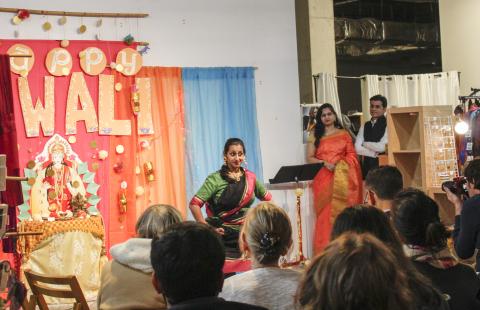What were the specific goals of this creative economy project? Describe the community development challenge or opportunity that your project was designed to address:
When the project began, the initial goal was to offer a popup art gift shop and performance space that would incite the imagination for the kind of arts activity that could happen in Malden, generate revenue for local artists and performers, build a creative community, generate revenue for the city by drawing visitors to various performances, and incubate future arts possibilities for Malden. The goal was most significantly to create a sense of place by showcasing local talent - thereby introducing Malden to its treasure.
The project addressed the need for spaces to show, sell, and perform artistic work. It also addressed that lack of creatives networking opportunities by providing a space that people could go to during the five weeks of operation.
If the goals change over time, please describe how:
After the property owners invited the Malden Pops Up community to stay for a year more than the initial five weeks, new goals included building a hub that allows cultures to mix, reach the new residents moving in to Malden, increase the market for arts retail by inviting businesses to purchase art or participate, introduce art classes, offer a rotating art gallery that would draw more people to Malden, experiment with a podcast studio inside the shop, and better manage daily operations with volunteers.
In addition, the goal became to identify a potentially sustainable and more permanent cultural hub and arts presence in the downtown.
Who was involved in this project and what did they do? (be sure to include the partners from outside of the creative sector and how local voices were included):
The project was sponsored by Malden Creates, LLC and led by Ose Schwab. Other key participants included various local artists who helped shape the call for entries process, design the space, and serve as volunteer staff to work in the shop during open hours. The project also involved cultural entrepreneurs and nonprofits who sold imported items or products specifically related to Malden's history or artistic treasure. In addition, MATV, Malden's Media Center, not only sold books as part of the One Book One City initiative, became a partnering player that would introduce a popup podcast studio to the gift shop/gallery/performance space.
How does this project relate to a larger community development strategy?
The project supports the current drive to revitalize the downtown. This is a goal that is driving construction projects in the downtown - bringing a higher concentration of housing close to the Train station, and with this a population of tenants hungry for ways to spend time and money. The strategic plan includes suggestions of diverse retail and cultural activities. This project combined the two.
What projects or places, if any, inspired your approach to this creative economy project?
Many of the creative placemaking projects as described in the arts and culture planning toolkit created by MAPC as well as ourtown projects excited the imagination for what could happen. Places like Lowell that built up an arts district and eventually a vibrant arts and culture scene in the downtown. Lynn and its cultural district and mural projects also inspired this popup indirectly as did many key creative economy thought leaders like Theaster Gates.
